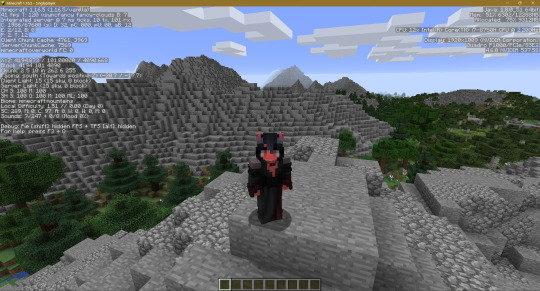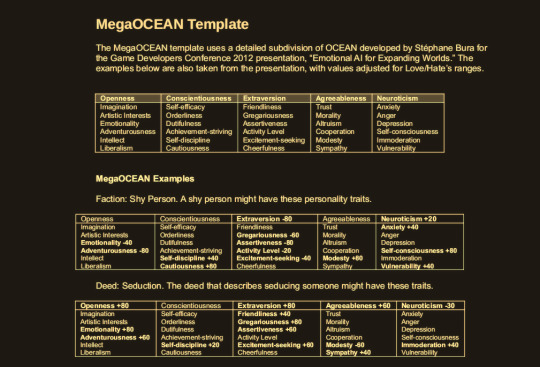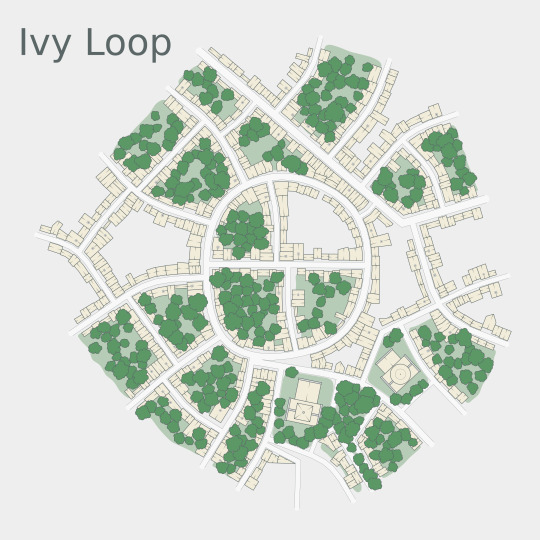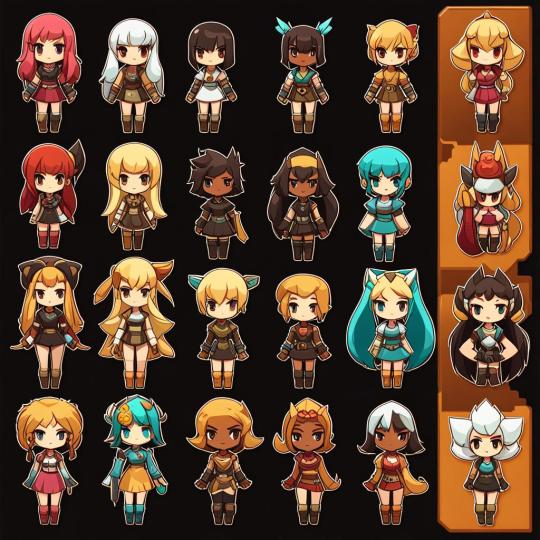#netlogo
Explore tagged Tumblr posts
Text


New ring design. Previewed on Tumblr first!
#rings#engagement ring#diamond#algorithmic design#algorithmic art#grasshopper3d#netlogo#baroqueplusplus#jewelrydesign#algorithmicdesign#generativedesign#baroque++
35 notes
·
View notes
Text
My dynamic energy budget (DEB) model using data for my study species finally resembles something coherent!
There's still so much I need to learn about this type of model before it can be used fully in my project though, and some parameters that need figuring out properly. But look! It goes!

Also, it snowed quite well over the weekend here in Scotland. So please enjoy this photo I took of a loch I stopped at while having a car-lunch at the weekend! :)

#phd life#phdblr#ecological modelling#marine biology#phd research#phd diary#dynamic energy budget#marine ecology#netlogo#scottish scenery#beautiful scotland#frozen loch#lovely loch#marine mussels
5 notes
·
View notes
Text
I think if you ran a tajiabe relationship simulation and did like 100 iterations it would end with tajima dead on day 3 in like 80% of them
6 notes
·
View notes
Text
Suggestions to make the best use of the remainder of 2023...

Yeah, I try to prepare a couple things as to bloom next month onwards. Essentially boils down to job-seeking hunt while balancing such with my creative output getting back to speed.
There are so many interesting matters to learn and all while earning a living for it, a great excuse to do courseware and make creative things yk (seriously considering mixing my own ideas of solarpunk-esque explainers and curating lists of learning courseware... stuff as to get my way to contribute to KDE Plasma or whatever);
guess the best way to start a decent career for me would be to cultivate that creative portfolio of mine...


If I am not mistaken, the best way to start would simply to produce and publish some cool data viz stuff about things I like... (I do enjoy many special interests but especially want to dive into sidestream computation and sustainable DIY imaginative paracosms)
As in, I really do want to craft a Artix KDE Plasma/Liquid Kate on RISC-V creative workflow taking advantage of SBCL (Lisp) with a HTML-esque canvas with REPL and whatever symbolic computation stack/deque stuff I want to explore... (Lain, Parade & ZealOS)
Part of that is definitely investigating obsolete-ish stuff (COBOL, LISP 1.5, QuakeC, EVALDRAW, Qodot...) and creating a handful of small game levels derived from the imaginative geometry quirk I talked of the other month...






I sure hope we get to see more cool stuff going along soon... Especially around NetLogo systemic design, DrawLISP rich media canvas and "Love/Hate"+"QuestMachine"...
5 notes
·
View notes
Text
My Contribution an ABM student to the Society
As an ABM student, I am contributing to the field of complex systems research by using Agent-Based Modeling (ABM), which simulates the behavior of autonomous agents in a specific environment. This approach allows researchers to explore complex systems and phenomena that are difficult to study through traditional experimental methods. My research focuses on understanding the dynamics of social systems, such as the spread of infectious diseases, the emergence of social norms, and the formation of social networks, by modeling the behavior of individuals and their interactions. I am actively involved in the ABM community, attending conferences, presenting my work, and collaborating with other researchers. I also contribute to the development of ABM software and tools, such as NetLogo and Repast, which are widely used in the field. As an advocate for open science, I regularly publish my work in peer-reviewed journals and make my models and data available on open repositories like GitHub and Zenodo. My goal is to advance our understanding of complex systems and contribute to the development of new methods and tools for modeling and simulation, while promoting the use of ABM in interdisciplinary research with biology, economics, and sociology.
2 notes
·
View notes
Text
COMP90083 Computational Modelling & Simulation Assignment 1
In this assignment, you will use NetLogo to create an agent-based model (ABM) of a complex observed phenomenon: the spread of an infection (such as COVID-19) through a population. Deliverables include a functional NetLogo model of the system, a description of the model using the ODD protocol (Overview, Design concepts, Details), and a brief report describing an investigation conducted using the…
0 notes
Text
Fwd: Course: Poland.AgentBasedModels.29July-2August
Begin forwarded message: > From: [email protected] > Subject: Course: Poland.AgentBasedModels.29July-2August > Date: 19 April 2024 at 06:13:34 BST > To: [email protected] > > > > Dear all, > > We're excited to announce our upcoming five-day course on Agent-Based > Modelling Using NetLogo, happening from July 29th to August 2nd, 2024, > at the Faculty of Biology and Environmental Protection, University of > Lodz, Poland. > > Course website: ( > https://ift.tt/Ksq3tCo ) > > Agent-based modeling (ABM) is a powerful technique for unraveling the > dynamics of complex systems, spanning natural and social sciences. Led > by renowned experts, Professors Volker Grimm and Steve Railsback, this > course will equip you with the knowledge and skills to design, implement, > and evaluate ABMs tailored to your research and teaching needs. > > Here's what you can expect: In-depth instruction in ABM principles and > practice Hands-on tutorials and exercises using NetLogo, a leading ABM > software platform Open discussions and independent project work > > For the full list of our courses and workshops, please visit: ( > https://ift.tt/Ksq3tCo ) > > Best regards, > > Carlo > > > Carlo Pecoraro, Ph.D > Physalia-courses DIRECTOR > [email protected] > mobile: +49 17645230846 > > > "[email protected]"
0 notes
Text
Sekilas Penjelasan Software Netlogo serta Fitur Unggulannya
Ketika menganalisis data, hal yang penting di perhatikan tidak hanya prosesnya saja, tapi juga hasil akhirnya. Selengkapnya dapat dilihat di https://patrastatistika.com/sekilas-penjelasan-software-netlogo-serta-fitur-unggulannya/
1 note
·
View note
Text
New video editing software from Topaz Labs turns my cellphone camera into an ace for macro photography!
#rings#engagementrings#jewelry#jewelrydesign#grasshopper3d#netlogo#generativedesign#computationaldesign#baroqueplusplus#baroque++#algorithmicdesign
24 notes
·
View notes
Text
Sekilas Penjelasan Software Netlogo serta Fitur Unggulannya
Ketika menganalisis data, hal yang penting di perhatikan tidak hanya prosesnya saja, tapi juga hasil akhirnya. Metode pemodelan serta simulasi data biasanya akan di pakai untuk mempermudah masyarakat dalam menangkap maksud dari hasil analisis tersebut.
Selengkapnya dapat dilihat di https://patrastatistika.com/sekilas-penjelasan-software-netlogo-serta-fitur-unggulannya/
0 notes
Text
5 Most Effective Tips to Write a NetLogo Assignment

NetLogo is a powerful, versatile platform for modeling complex systems, making it a valuable tool for students and researchers alike. However, when it comes to writing NetLogo assignment, it's important to ensure that your instructions are clear, concise, and well-structured. In this blog, we will explore five effective tips to help you create engaging and educational NetLogo assignments.
1. Understand the Fundamentals of NetLogo
Before you can create an effective NetLogo assignment, it's crucial to have a strong understanding of the software yourself. Take the time to explore the basics of NetLogo, from creating agents and patches to defining rules and running simulations. Familiarize yourself with the NetLogo interface and its features so that you can guide your students through the process confidently.
2. Define Clear Learning Objectives
Your NetLogo assignment should have clear learning objectives that align with your educational goals. Ask yourself what you want your students to achieve by completing the assignment. Are you trying to teach them a specific modeling concept, problem-solving skills, or data analysis? Once you've identified your objectives, design the assignment in a way that facilitates these learning outcomes.
3. Break Down the Assignment into Manageable Steps
Complex modeling tasks can be intimidating for students. To make your NetLogo assignment more approachable, break it down into smaller, manageable steps. This will help students understand the progression of the assignment and make it less overwhelming. For example, you can start with agent creation, move on to defining interactions, and then advance to data collection and analysis.
4. Provide Clear Instructions and Examples
Clarity is key when writing a NetLogo assignment. Provide detailed step-by-step instructions and include examples to illustrate the concepts you're teaching. Make sure that your students understand how to use the NetLogo interface, create agents, and manipulate patches. Use screenshots and code snippets to reinforce your instructions. You may also want to provide annotated scripts to help students understand the logic behind the modeling.
5. Encourage Creativity and Problem-Solving
NetLogo assignments are an excellent opportunity to foster creativity and problem-solving skills. Encourage your students to explore and experiment with their models. Allow them to modify parameters, add new features, and think critically about the system they are modeling. By doing so, you will inspire a deeper understanding of complex systems and the ability to design innovative solutions.
Conclusion
Writing a NetLogo assignment that is both effective and engaging requires a combination of understanding the software, setting clear learning objectives, and providing detailed instructions. Remember to break down the assignment into manageable steps and encourage creativity and problem-solving among your students. By following these five tips, you can create NetLogo assignments that not only help students grasp the fundamentals but also inspire a passion for modeling and complex systems. Happy modeling!
0 notes
Text
an agent-based stock market simulator
This agent-based stock market simulator, which was originally programmed in NetLogo and later moved to R, captures the behavior of the market in a statistical sense. Which is to say, it shows how multiple traders following logical strategies can add up to a whole lot of randomness and unpredictability. Also known as autoregressive conditional heteroscedasticity and/or generalized autoregressive…

View On WordPress
1 note
·
View note
Text
Content data to study



Tcl, Fish, KDE Plasma 5.27+, RC, ES, RIO, ACME, Kwin, Liquidshell, Plasmoids, OpenDylan, SimH PDP8, ChrysaLisp, ZealOS' DolDocs, Haiku, NetBSD, Plan9, Smalltalk, Steel Bank Common Lisp, Common Lisp Object System, NetLogo, TROPIX, PhantomOS, ITS, CP/M, DOS, Unix v6-v7, Oberron A2 Bluebottle, ObjectREXX, DEC Alpha, GNU Hurd, MINIX3, Tcl alone, TclX, Tcl/Tk, PAL for PDP8, DIBOL, Synergy DBL, GAS, SVG, TextWorld, AROS, TakeCommandConsole, Krita with G'MIC, Blender, Inkscape, Falkon, Konqueror, LibreWolf, Lemon, Tlick, nsCDE, Turbochannel / Alpha AXP, GRUB, Paradise, Parade, Uxn, Tmux, OpenSSH, POSIX, Hypervisor, KVM, OpenBSD Sandbox / Jails, Git, GNU Bazaar, UTF-8, Microdot Linux, BeagleV-Fire, BeagleboneY-AI, DECmate II+, DECmate III with its dedicated disk drive unit, DEC Alpha, DUNNET, Emacs, Vim, Vi, VimWiki, Org-Mode, Zork, A Mind Forever Voyaging, Evennia, LambdaMOO, , Rust, ALGOL68, Grulx, Frotz, Z-Machine, Dolphin, Midnight Commander, GNU Taler, GDB, BinUtils, Autotools, Coreutils, Linux-libre, GNU Jami, GNUnet, MediaGoblin, Goblin Tools, LilyPond;
Super Cluedo, Die Macher, Century Spice Road, Century A New World, Carcasonne, Werewolves Pact Edition, Talespinner EU, D&D 5E, Pathfinder 2E, Cyberpunk RED, GilaRPGs' NOVA, Mark Rosenfelder, Ken Silverman, Nicky Case, Yukari Hafner, Prosperity ruleset for Landlords Game, Diplomacy, HAM Radio, RTTY, Hard-Copy terminals, interactive video terminals / lightweight clients, tabulators, typewriters, unit record equipment, cardboard counters, printing presses, phonebooks, yellow pages, pen & paper games, gamebooks, zines, atlases, road maps...
0 notes
Text
Run a program for me?
I’ve finalized my program for my thesis. The only obstacle for a quick defense: it takes a really long time to run the model. That’s where you can help!
Download NetLogo https://ccl.northwestern.edu/netlogo/
Open the config file and change -Xmx1024m to at least -Xmx3000m (this changes the amount of RAM it can use. The program takes less than two megabytes to run, but the default for NetLogo is one)
Download the program and all attendant files: https://github.com/efyoungud/stationfire
Open the program in NetLogo
Hit Master Run
Email me the results .csv file that you end up with
1 note
·
View note
Text
Hydrogen Fusion in Vaporwave
1 note
·
View note
